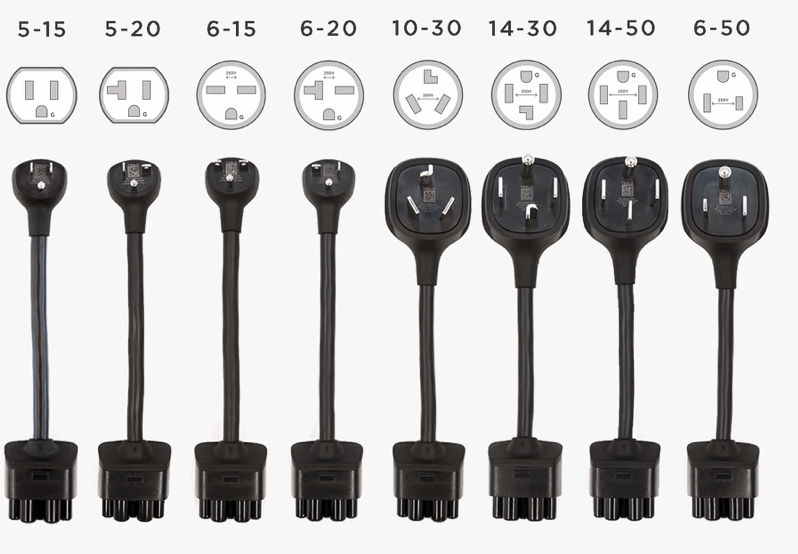The outdoor socket will require an in-use cover, which will be ugly and won't fit the large socket. Sockets are not the ideal way to connect EVs, anyway. But if you have to do it, framing in a little alcove with a door that matches your exterior may be the way to do it. Build the interior of the alcove to shed water, as it will be coming in.

Now a little background info. Your car comes with a little travel EVSE that is intended to ride in the trunk and be used for opportunity charging "on the road". They give you two specific plugs for specific reasons: The usual plug that works anywhere, and a NEMA 14-50 because that's what RV campsites have. Capische? That travel EVSE and funny socket is for charging at KOA, Yogi Bear and other campgrounds. It was never imagined to be an at-home socket (unless you also own an RV, which early adoptors often did).
And of course now that DC fast chargers are everywhere, the idea of RV-park charging is a bit quaint.

They typically offer other plug dongles. Tesla sells 8 (some other makers are still catching up). But if the travel unit is not used, it's preferable to hard-wire the unit with no plug or socket at all.
 src
src
Hardwired unit: NM or UF cable enters back of unit.
Separately, automakers generally expect you're going to get a wall-unit EVSE, and do your at-home charging that way, and that unit can be hard-wired, and thus avoid NEC 2020 GFCI requirements. This also allows the EVSE to be calibrated to the available power at your house, instead of being "50A or nothing", which frequently overloads electrical services.
90% of EV novices go off the rails here. They think "Well, 14-50 must be the standard EV plug" and this misconception has caught fire. In fact, the neutral in the 14-50 plug is entirely wasted (unless you also have an RV). EVs don't use neutral. As such, here's a NEMA 6-50 socket on an EVSE. And NEC 2020 requires a GFCI for a socket but not for hardwired EVSEs (they already include a better, smarter GFCI that self-resets and can alert you if there's a problem).
And most important, a Load Calculation must be done on the house, to determine the surplus ampacity available for EV charging. This is configured into the EVSE so it can tell the car what is safe to draw. If it's plug-in, the matching-amperage breaker and socket is installed, with the appropriate dongle plug for the travel EVSE. On those, the dongle tells the car what the safe amps are. There's a microchip molded into the plug.
- 15A = 2880 W charging. NEMA 6-15 socket or hardwired.
- 20A = 3840 W charging. NEMA 6-20 socket or hardwired.
- 30A = 5760W charging. NEMA 6-30 or 14-30 socket or hardwired.
- 40A = 7200-7680W charging, NEMA 6-50 or 14-50 socket or hardwired.
- 50-100A = amps x 192 charging, hardwired only.
The large 30A-50A sockets require absolutely enormous insertion forces. That means typical "old work" boxes that use clips to grab the wall, are likely to tear right out. They're not intended for those forces. The box needs to be screwed solidly to a stud, and it's really better off being a welded or drawn metal box (the plastic boxes distort).
So while the wall EVSE's aren't free, they sidestep the cost and trouble of a socket, enclosure and often a useless GFCI... and result in a more elegant installation. The only Code requirement is for a locking kit on the breaker to allow a maintainer to lock it in the off position, for maintenance. (not needed if the breaker is nearby in line-of-sight to the EVSE).




